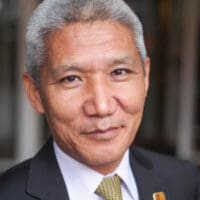Filmed during Mind & Life Institute’s “Mind & Life XXVII: Craving, Desire and Addiction” on October 30, 2013.
Day Three: Biological and Cultural Views
Much has been learned about addiction by examining its causes and effects at both individual and societal levels. In the morning session, Nora Volkow, director of the National Institute on Drug Abuse, covers a broad scientific account of the neural underpinnings of craving and addiction, exploring how the brain systems that create the experience of motivation, reward, and craving are affected by drugs that are frequently abused and often lead to addiction. Anthropologist Vibeke Asmussen Frank then offers a view of addiction that places the individual in a complex sociocultural context, and explore the implications of this view in regard to the conceptualization and treatment of addiction.
The Role of Dopamine in the Addicted Human Brain
SPEAKER: Nora Volkow
Chemicals that activate the reward system are reinforcing to a wide variety of species from reptiles to humans. Their physiological activation of brain reward systems is believed to be the starting point for the neurobiological changes that launch the addiction trajectory. Research on addiction has started to uncover the sequence of events and long-lasting sequelae that can result from the persistent abuse of addictive substances. These studies have shown how repeated drug use can target key molecules (both common and specific for various drug types) and brain circuits, and eventually disrupt the higher order processes that underlie emotions, cognition, and behavior, and enable an individual to exert self-control. Specifically, preclinical and clinical brain imaging studies have shown that addiction is characterized by an expanding cycle of dysfunction in the brain. The impairment appears to start in the more evolutionarily primitive areas that process reward, but then moves on to other brain regions that are responsible for more complex cognitive functions. Thus, in addition to reward, addicted individuals can experience severe disruptions in learning (memory, conditioning, habituation), executive function (impulse inhibition, decision making, delayed gratification, judgment), cognitive awareness (interoception), and emotional response (mood and stress reactivity). The combined, cumulative impact of addiction on all these circuits results in poor decision making in addicted individuals despite awareness of negative consequences, and the inability to delay gratification despite future losses. Scientific advances in this area are informing strategies for medication development to help buffer the brain dysfunction associated with chronic drug exposure and addiction.
Beyond the Individual: The Role of Society and Culture in Addiction
SPEAKER: Vibeke Asmussen Frank
Research on addiction or problematic substance use has been dominated by a biomedical model focused on choices individuals make and problems that ensue, including damage to the brain and body, health, and well-being. However, it is also crucial to consider the contexts that may shape and constrain individual choices. Scientists in this sociocultural tradition attend to the reasons people use mood altering substances, the meanings and practices they and others around them attach to the substances, and the dynamics between individual agency and larger social and cultural contexts. Methodologically, anthropologists primarily use qualitative assessments, while other sociocultural scientists draw on combinations of qualitative and quantitative data. This presentation offers two instances in which this broader social and cultural perspective raises questions about assumptions underlying mainstream biomedical research on addiction. First, when we look at ways out of problematic substance use, we find that people with serious alcohol and drug abuse problems often cure themselves, without formal treatment. At the same time, developments and expansions within the treatment sector have not significantly changed the efficacy of organized treatment programs. Second, when we examine how societies regulate substances in order to decrease harm, we discover that some of these attempts at social control actually cause harm. Frank examines prohibition of alcohol and criminalization of drugs as two examples. Overall, focusing on individuals in context rather than in isolation points to interpersonal relations as crucial factors that help explain phenomena like addiction and problematic substance use, which have a very powerful social and cultural overlay.
INTERPRETER: Thupten Jinpa
PANELISTS:
His Holiness the 14th Dalai Lama
Kent Berridge
Sarah Bowen
Richard J. Davidson
Wendy Farley
Roshi Joan Halifax
Marc Lewis
Matthieu Ricard
Diana Chapman Walsh
Arthur Zajonc




